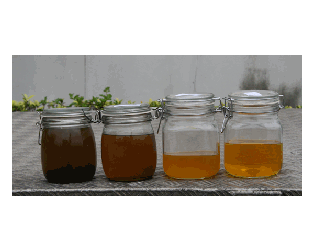Fuel Specifications
 EN590 - The B7 Introduction 01st Jan 2011
EN590 - The B7 Introduction 01st Jan 2011
What is B7 and why should I be concerned?
In Jan 1st 2011 EN590 changed. Now, all gas oil will have a lower sulphur content and a 7% biodiesel blend.
What does it mean?
The technical explanation from the fuels quality directive – Directive 2009/30/EC, Article 4 – Diesel Fuel (EN590)
Date of introduction:
1st January 2011
Applies to:
All gas oils for non-road mobile machinery (inc. inland waterway vessels), agricultural and forestry tractors, recreational craft.
Maximum sulphur content:
10ppm (0.001%)
FAME mix:
7% by volume (various sources: rape oil, palm oil, soy, jatropha tallow, used cooking oil, etc)
Base diesel:
Must be EN590 compliant
In a nutshell, this means you will see lower sulphur and a 7% biodiesel mix in your gas oil/diesel. This is the new EU standard.
What is the aim?
To make the fuel more “green”. To use less carbon during the fuel life cycle. To comply with the Renewable Energy and Fuel Quality Directives
What is FAME and what effect will this change have?
FAME is biodiesel, or rather Fatty Acid Methyl Esters. However the name Biodiesel is more commercially friendly. There are at least 6 issues to look out for.
Less power from your engine
Bio diesel in this form is a little less potent than mineral derived diesel. This means the engine will have to work harder to get more power.
Less lubricant in the fuel
Lower sulphur means potentially higher engine wear and more frequent oil changes. Check pistons more often.
A shorter shelf life
Where mineral fuels are within specification for 6 -12 months, biodiesel has a life of 8 -12 weeks. The mix of fuel will extend this, but a shorter life is a certainty.
Higher water content
FAME is hygroscopic, meaning it absorbs water from the atmosphere or its surrounds. In fact it can absorb up to 1500ppm, where 200ppm is the maximum allowed. High water content increases the acidity of the fuel, meaning your seals and gaskets will start to be eaten away; we have seen them turn into a toffee like substance. Worst still is the damage water can do to the engine itself, modern common rail engines have pressures of 3000 bar plus, it is not possible to compress water to the same level as fuel, which results in injector wear (meaning poor efficiency), or injector destruction (meaning the engine fails all together).
There is plenty more reading on line about these issues, but a good starting point is the department for transport. Please click here for one of their EN590 documents that gives a good grounding in the topic.



